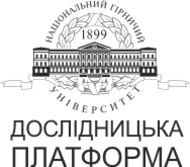№80-15
Comfort and safety in buildings under vibration effects: challenges and ways to overcome them
V. Kovrova1, V. Volkova1, 2
1Educational and Scientific Institute "Prydniprovska State Academy of Civil Engineering and Architecture", Ukrainian State University of Science and Technology, Dnipro, Ukraine
2 Dnipro State Agrarian and Economic University, Dnipro, Ukraine
Coll.res.pap.nat.min.univ. 2025, 80:150–159
Full text (PDF)
https://doi.org/10.33271/crpnmu/80.150
ABSTRACT
Purpose. To determine the influence of the structural solution on the dynamic parameters of buildings on vibration safety and the human body; to perform numerical modelling of the interaction of soil with the building foundation and to assess the influence of soil characteristics on the vibration behavior of structures, as well as to consider effective methods for reducing vibrations to ensure the stability and comfort of buildings.
The methods. The interaction of a multi-storey building with a reinforced concrete frame with the surrounding soil massif was investigated using the methods of computer mechanics. A finite element model was created using the SCAD software package and the dynamic characteristics of buildings of different number of storeys and structural schemes were obtained.
Findings. Based on the obtained results, it was found that changes in soil parameters significantly affect the frequencies of natural vibrations of buildings, which can cause additional mechanical stresses in building elements and discomfort to residents. Changes in the frequencies, eigenvalues and amplitudes of vibrations signal the presence of defects and damage to structures. The paper analyses the impact of vibrations on the human physiological state and identifies critical frequency ranges that can cause discomfort or changes in well-being. It is determined that the first mode of vibration is the most sensitive indicator of the building condition.
The originality. The methodology for modeling the interaction of a multi-story frame building with a soil foundation has been further developed. The regularities of changes in the dynamic characteristics of the frame depending on the mechanical characteristics of the soil have been revealed.
Practical implementation. The obtained results allow to improve the methods of assessment of vibration impact on buildings, which will contribute to the improvement of their safety and comfort. The proposed methods of vibration reduction can be used to minimize the negative impact on structures and human health in densely populated areas of cities.
Keywords: vibration safety, soil characteristics, natural frequencies, finite element modelling, modal analysis, buildings with reinforced concrete frame.
References
1. Edirisinghe, T. L., & Talbot, J. P. (2024). The significance of soil–structure interaction in the response of buildings to ground-borne vibration from underground railways. Journal of Sound and Vibration, 118812. https://doi.org/10.1016/j.jsv.2024.118812
2. Connolly, D. P., Marecki, G. P., Kouroussis, G., Thalassinakis, I., & Woodward, P. K. (2016). The growth of railway ground vibration problems — A review.Science of The Total Environment, 568, 1276–1282.https://doi.org/10.1016/j.scitotenv.2015.09.101
3. Впливу вібрації на організм людини. (n.d.). Stud. https://stud.com.ua/3161/bzhd/vplivu_vibratsiyi_organizm_lyudini
4. Kralik, J., & Kralik, J. (2017). Experimental and Sensitivity Analysis of the Vibration Impact to the Human Comfort. Procedia Engineering,190, 480–487.https://doi.org/10.1016/j.proeng.2017.05.367
5. Králik, J. (2010). Experimental and numerical analysis of the vibration negative effects on the humans. Vybrané problémy dynamiky těles. Dynamika tuhých a poddajných těles, Chap 4.4, 154–162. https://doi.org/10.1016/j.proeng.2017.05.367
6. Davydov, I. I., & Udovychenko, Ye. O. (2024). Analiz vplyvu vibratsii na stalevi ramni konstruktsii: modeliuvannia ta eksperymentalni doslidzhennia. U Materialy Mizhnarodnoi nauk.-prakt. konferentsii «Innovatsiini tekhnolohii zabezpechennia parametriv komfortu, enerhoefektyvnosti i ekolohichnosti zhytlovykh budivel na osnovi smart-tekhnolohii» (s. 93–95). Prydniprovska derzhavna akademiia budivnytstva ta arkhitektury.
7. Kazakevich, M., & Kulyabko, V. (1996). Vvedenie v vibroekologiyu zdanii i sooruzhenii. PGASA
8. Connolly, D. P., Kouroussis, G., Laghrouche, O., Ho, C. L., & Forde, M. C. (2015). Benchmarking railway vibrations – Track, vehicle, ground and building effects. Construction and Building Materials, 92, 64–81. https://doi.org/10.1016/j.conbuildmat.2014.07.042
9. Thompson, D. J., Kouroussis, G., & Ntotsios, E. (2019). Modelling, simulation and evaluation of ground vibration caused by rail vehicles. Vehicle System Dynamics, 57(7), 936–983. https://doi.org/10.1080/00423114.2019.1602274
10. Fiala, P., Degrande, G., & Augusztinovicz, F. (2007). Numerical modelling of ground-borne noise and vibration in buildings due to surface rail traffic. Journal of Sound and Vibration, 301(3-5), 718–738. https://doi.org/10.1016/j.jsv.2006.10.019
11. Lopes, P., Costa, P. A., Ferraz, M., Calçada, R., & Cardoso, A. S. (2014). Numerical modeling of vibrations induced by railway traffic in tunnels: From the source to the nearby buildings.Soil Dynamics and Earthquake Engineering, 61–62, 269–285. https://doi.org/10.1016/j.soildyn.2014.02.013
12. Hussein, M., Hunt, H., Kuo, K., Costa, P. A., & Barbosa, J. (2013). The use of sub-modelling technique to calculate vibration in buildings from underground railways.Proceedings of the Institution of Mechanical Engineers, Part F: Journal of Rail and Rapid Transit, 229(3), 303–314. https://doi.org/10.1177/0954409713511449
13. Auersch, L. (2021). Prediction of building noise and vibration – 3D finite element and 1D wave propagation models. Proceedings of Euronoise 2021, Madeira, Portugal, (pp. 1–9).
14. Kowalska-Koczwara, A., & Stypula, K. (2016). Assessment of the Vibration Influence on Humans in Buildings in the Standards of Different Countries. Procedia Engineering, 161, 970–974. https://doi.org/10.1016/j.proeng.2016.08.835
15. Minrehion Ukrainy. (2022). Zakhyst vid shumu ta vibratsii (DBN V.1.2-10:2021). Derzhavne pidpryiemstvo "Ukrarkhbudinform".
16. Coermann, R. R. (1962). The Mechanical Impedance of the Human Body in Sitting and Standing Position at Low Frequencies. Human Factors: The Journal of the Human Factors and Ergonomics Society,4(5), 227–253. https://doi.org/10.1177/001872086200400502
17. Gaile, L., Ratnika, L., & Pakrastins, L. (2022). RC Medium-Rise Building Damage Sensitivity with SSI Effect. Materials, 15(5), 1653. https://doi.org/10.3390/ma15051653
18. Kovrova, V., Volkova, V., & Pakrastins, L. (2024). Modal Analysis of a Multi-storey Frame Building with Consideration of the Soil Base. Modern Building Materials, Structures and Techniques, 392, 668–673. https://doi.org/10.1007/978-3-031-44603-0_69
19. Gaile, L., Sliseris, J., & Ratnika, L. (2021). Towards SHM of medium-rise buildings in non-seismic areas. У 10th International Conference on Structural Health Monitoring of Intelligent Infrastructure (SHMII 2021) (s. 1023–1030). https://doi.org/10.5281/zenodo.7331081
20. Savytskyi, M., Danishevskyy, V., & Gaidar, A. (2021). Dynamic modelling and optimal design of buildings with friction dampers using particle swarm optimization.Ukrainian Journal of Civil Engineering and Architecture, (1), 14–25. https://doi.org/10.30838/j.bpsacea.2312.230221.14.713
21. Ivanchenko, H. M., & Honcharenko, M. V. (2015). Ohliad metodiv seismozakhystu ta pryklady yikh zastosuvannia u konstruktsiiakh. Opir materialiv i teoriia sporud, 96, 158–164.




